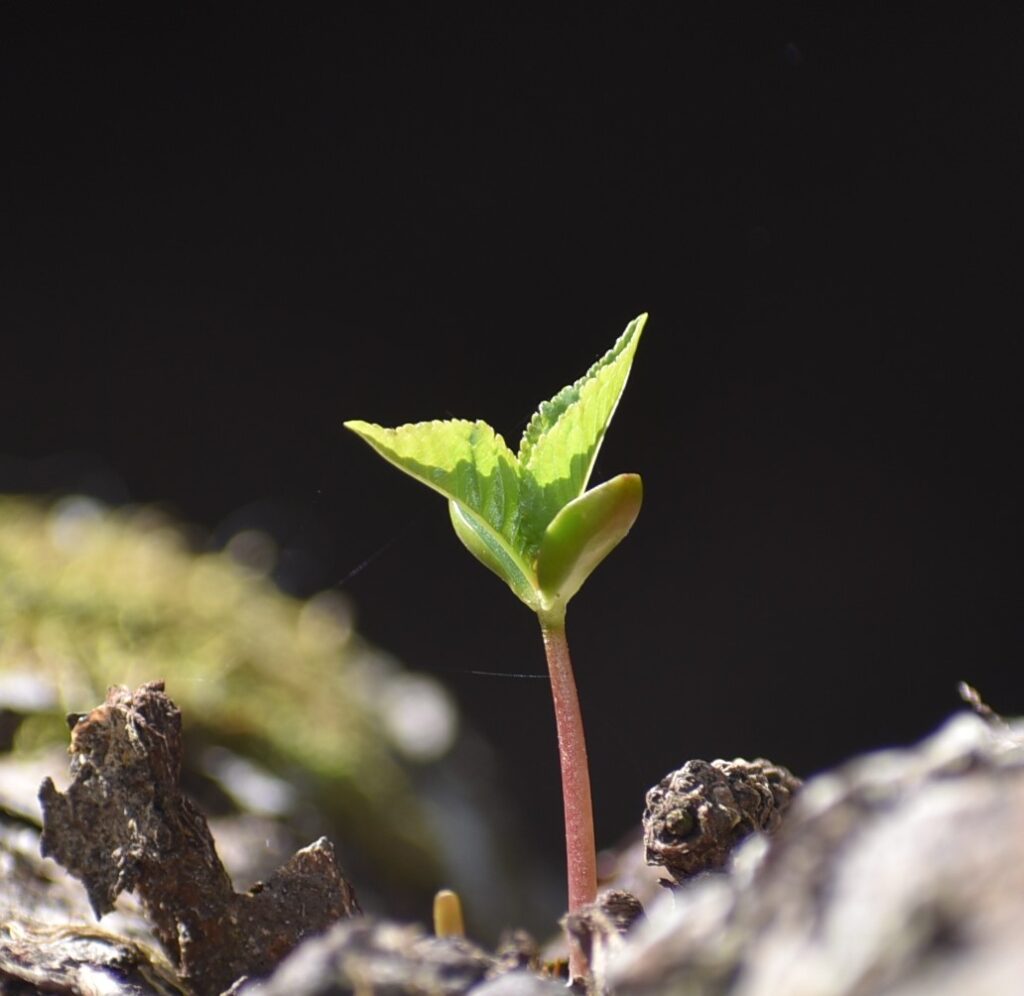A Dead Hedge is a wonderful way of re-purposing dead plant material. This simple but effective idea turns waste into useful structures that benefit wild life and boast the biodiversity in your garden.

What is a dead hedge?
A dead hedge is a fence, barrier or garden partition, made from branches, logs, twigs and hedge trimmings. These are woven, or simply placed, between stakes, which have been hammered in to the ground, to keep the structure in place.
I have been dead hedging for a few years now. I had a lot of prunnings that I didn’t want to dump. So I made a very simple fence with them, to keep my dogs out of my vegetable garden. And it worked, so I have been making dead hedges ever since.

What do you need to create a dead hedge?
- Branches, logs or twigs from your garden.
- Basic hand-tools, such as loppers, pruning shears, gloves, hammer and, if you have thick branches, you will need a pruning saw.



And you don’t need any special skills, this is a project that the whole family can easily get involved with. Children can collect fir cones, bamboo, or other plants with hollow stems, to add even more bug habit to the hedge.
Why is a dead hedge such good wildlife habitat?
All sorts of creatures find homes and hidding places within a dead hedge. They support many types of insects, which feed garden birds. And, as twigs rot down, the nutrients are recycled back into the earth, this means your garden waste needn’t go into garden bins or bonfires. Also we save fuel because we are not transporting our waste to tips. And saving fuel saves money and helps the environment.
A dead hedge is one of the best ways to add biodiversity to your garden. Because, dead matter, such as logs, sticks and leaves, provide food for so many insects which feed other creatures. And are therefore as, important as the beautiful flowers, leaves and fruit that we all love.
Also saprophytic fungi live on rotting brown matter and they help to recycle the carbon and the nutrients that are in the wood. So the ground around your dead hedge will become rich and fertile and teaming with life. Another plus is any plants in that area will benefit from the extra moisture that will be retained in the soil too.
Dead hedges have many uses
Dead Hedges can be used for screening, wind breaks, stabilizing slopes, dividing borders and for adding barriers. This sort of barrier has been used for centuries in many cultures around the world to form boundaries and protect livestock.
They make great divides for childrens play areas, or to keep pets of the garden. And they can even be used as thrifty raised planters.
They also make great homes for wild life. Hedgehogs love to forage around the bottom of dead hedges and can even use them as nest sites.
Dirt Cheap
These structues are a very economical way of dealing with garden waste. And once they are constructed they require very little maintenance, they don’t need watering, pruning or painting.
Making a dead hedge is an ongoing project, because you can keep adding to it whenever you have more twigs and trimmings. So you will always have somewhere to put your garden prunnings.



There are lots of creative and artistic ways of constructing a dead hedge, it does not need to be untidy. Because they are so versatile, and can be modeled to fit any garden style. Therefore they are stutible for a modern town house or a forest garden.
How to make a dead hedge
To start making your dead hedge you will need some branches for posts. The size of the posts will depend on the size the structure that you want to build. Decide how thick you want your dead hedge to be, and put your posts so that they make the hedges boundaries. Your dead branches and twigs will go in-between the posts.
Remember these types of projects are very transformable. Because you can keep adding to them, whenever you cut back your shrubs or trees.
Once you have hammered your posts firmly into the ground you can begin constructing your fence. Be creative with what you have available to work with. You can weave long flexible branches around your posts. You can also make bundles with smaller trimmings and pack them between your posts.
I just simply lay the biggest branches between my posts and weave the smaller branches and twigs in-between them. Any thing that sticks out too much gets cut off and pushed back in to the hedge.
Bring your hedge alive

Add living plants to your hedge, such as Ivy, Honeysuckle, Clematis, Sweet peas, Nasturtiums or even Squash plants and climbing beans.This will encourage even more diversity into your garden.
Benifits of making a dead hedghe:
- Economical, possiblly free
- Simple to construct
- Re-purposes waste materials
- Sustainable and ecological
- Promotes biodiversity
- They are versitile
- Provide privacy
- Conceal ugly utility areas
- Permanent, if you keep adding to them
- Or temporary, just leave them to rot down



Tip from Ernest: get the whole family involved in creating a wonderful wild habitat from garden waste.


3 responses to “An easy way of turning waste into wildlife retreats”
[…] An easy way of turning waste into wildlife retreatsJuly 15, 2023 […]
[…] An easy way of turning waste into wildlife retreatsJuly 15, 2023 […]
[…] An easy way of turning waste into wildlife retreatsJuly 15, 2023 […]